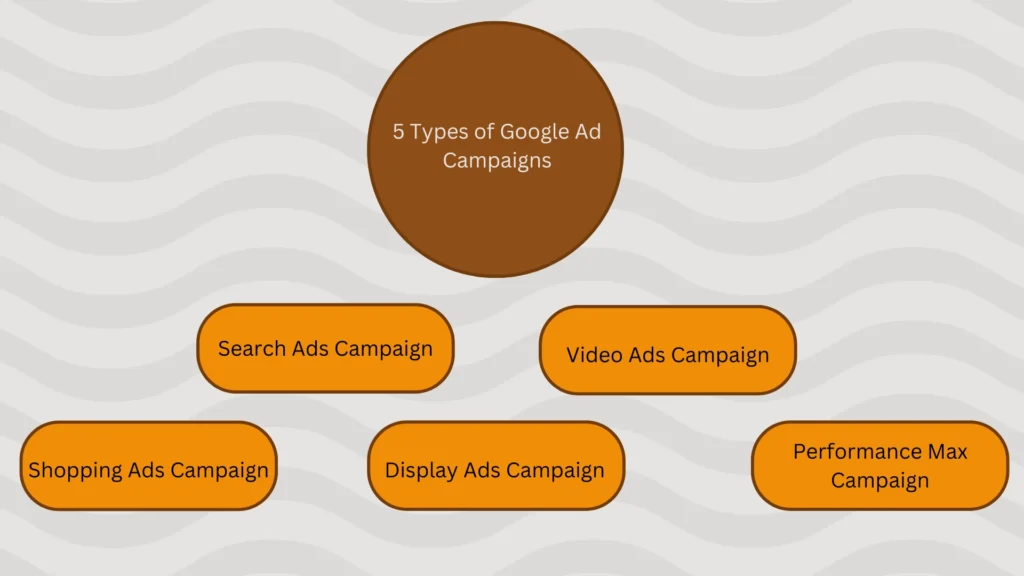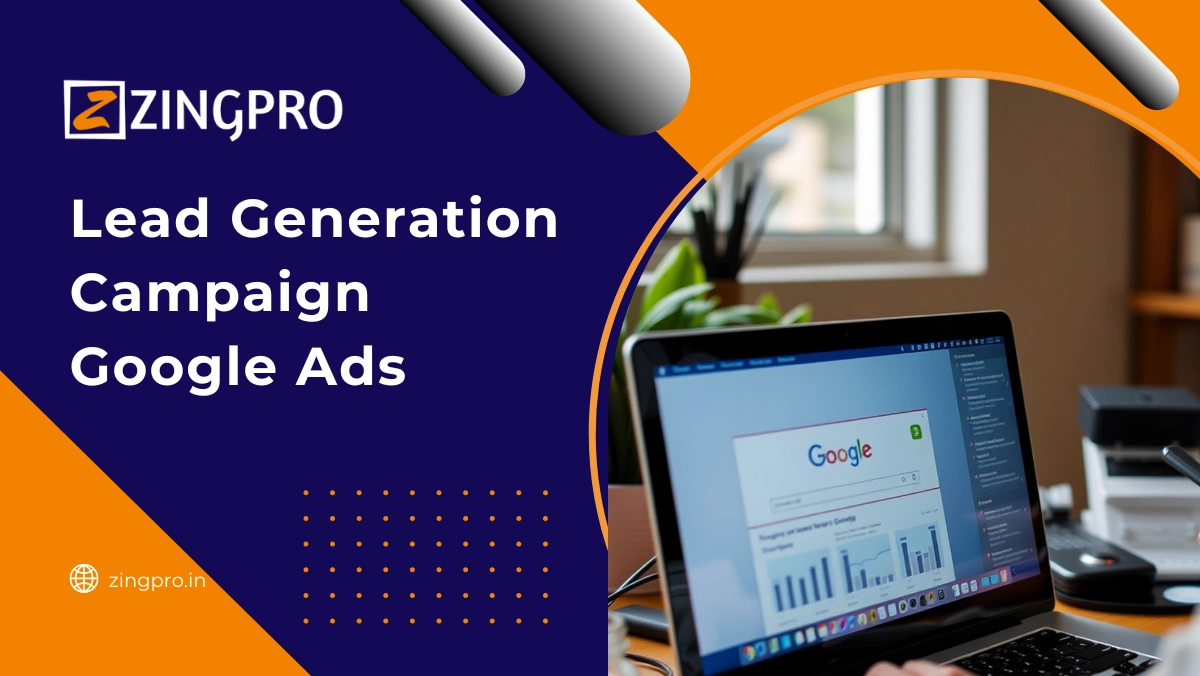A lead generation campaign Google Ads can transform your business by attracting potential customers quickly and effectively. Google Ads leads campaign offers powerful tools to reach people actively searching for your services or products. In this guide, we’ll explore how to design an efficient lead generation campaign Google Ads, covering strategies and best practices to get high-quality leads.
Why Use Google Ads for Lead Generation?
A lead generation campaign Google Ads helps you reach customers who are already looking for your products or services. Google Ads leads campaign lets you control your budget, target specific audiences, and measure campaign performance to ensure your investment is generating results.
Benefits of Using Google Ads for Lead Generation
- Immediate Reach: Reach potential leads instantly on the largest search engine in the world.
- Targeted Audiences: Define your audience based on demographics, interests, and behaviors.
- Flexible Budgets: You can control spending, only paying when someone clicks on your ad.
- Measurable Results: Access detailed data to see what works and make adjustments as needed.
For businesses looking for a solid lead generation strategy for B2B, lead generation campaign Google Ads can be an excellent choice, especially when combined with a well-planned campaign structure.

5 Types of Google Ad Campaigns
1. Search Ads Campaign
Google Search Ads are text-based advertisements that appear at the top of search results when users search for specific keywords. These ads are highly effective for businesses running a lead generation campaign Google Ads, as they target users actively looking for products or services. A well-structured lead generation campaign Google Ads ensures higher conversions by reaching potential customers at the right moment.
2. Display Ads Campaign
Google Display Ads appear on millions of websites, apps, and YouTube videos within the Google Display Network. Businesses looking to enhance brand awareness and remarketing efforts can leverage a lead generation campaign Google Ads with display ads. Display campaigns are ideal for reaching a broader audience and increasing engagement.
3. Shopping Ads Campaign
Google Shopping Ads showcase product images, prices, and store names at the top of search results. These ads are excellent for e-commerce businesses looking to generate more sales through a lead generation campaign Google Ads. Optimizing a lead generation campaign Google Ads helps businesses drive more qualified traffic and boost revenue.
4. Video Ads Campaign
Google Video Ads run on YouTube and partner websites. Running a lead generation campaign Google Ads with video ads allows businesses to engage audiences through storytelling and demonstrations. YouTube’s advanced targeting helps businesses reach specific demographics, making it a valuable tool for lead generation.
5. Performance Max Campaign
Performance Max (PMax) is an AI-driven campaign type that automates ad placements across Google’s platforms. Businesses looking to scale their lead generation campaign Google Ads can benefit from PMax campaigns. A lead generation campaign Google Ads using Performance Max ensures that ads are shown to the right audience at the right time, maximizing conversions.
How to Set Up a Lead Generation Campaign on Google Ads
Step 1: Log in to Google Ads
- Go to Google Ads and sign in.
- Click “New Campaign” to start a fresh campaign.
Step 2: Choose a Campaign Goal
- Select “Leads” to create a lead generation campaign Google Ads.
Step 3: Select a Campaign Type
- Choose Search, Display, Video, or Performance Max based on your target audience.
Step 4: Set Targeting Options
- Define location, language, and audience demographics to reach potential leads.
Step 5: Create Ad Groups and Select Keywords
- Use Google Keyword Planner to find relevant keywords related to your services.
- Organize keywords into ad groups for better performance.
Step 6: Write Compelling Ad Copy
- Include a strong headline, description, and call-to-action (CTA).
- Make sure the ad highlights the benefits of your service to generate leads.
Step 7: Set Budget and Bidding Strategy
- Choose a CPC (cost-per-click) or maximize conversions strategy for lead generation.
- Allocate a daily budget based on expected conversions.
Step 8: Add Ad Extensions
- Use lead form extensions to capture information directly from ads.
Step 9: Review and Launch the Campaign
- Double-check all settings and ensure conversion tracking is enabled.
Step 10: Monitor and Optimize Performance
- Use Google Ads analytics to track clicks, conversions, and cost per lead.
Optimizing Landing Pages for Higher Conversions
Once users click on your ad, they should land on a page optimized to convert them into leads. A well-designed landing page plays a huge role in the success of a lead generation strategy for B2B.
Key Elements of a Highly Converting Landing Page
- Relevant Content: Ensure the page provides information directly related to the ad they clicked.
- Clear CTA: Use buttons or links with clear CTAs like “Sign Up,” “Download Now,” or “Get Started.”
- Simple Form: Keep your lead form short, asking only for essential information to minimize barriers.
For any Google Ads leads campaign, the landing page should make it easy for users to become leads by providing relevant information and reducing unnecessary steps.
Tracking and Measuring Lead Generation Performance
The final step in running a successful lead generation campaign Google Ads is tracking your results. Google Ads provides valuable data that can help you understand what’s working and where improvements are needed.
Metrics to Monitor
- Conversion Rate: Measures how many clicks turn into leads.
- Cost per Lead (CPL): Shows how much you’re spending to generate each lead.
- Click-Through Rate (CTR): A higher CTR indicates that your ad is appealing to users.
Understanding what the results of lead generation are through these metrics is crucial for optimizing your campaign. Making adjustments based on performance data will improve your campaign’s effectiveness over time.
Conclusion
Launching a successful lead generation campaign Google Ads involves careful planning, strategic ad copy, optimized landing pages, and constant tracking. By following these steps, you can attract valuable leads and improve your chances of converting them into long-term customers.
Whether you’re creating a lead generation strategy for B2B or simply looking to boost your online presence, Google Ads leads campaign can be a powerful tool for growth. Remember, consistent testing and optimization are key to long-term success. Start implementing these strategies and watch your lead generation efforts pay off.

